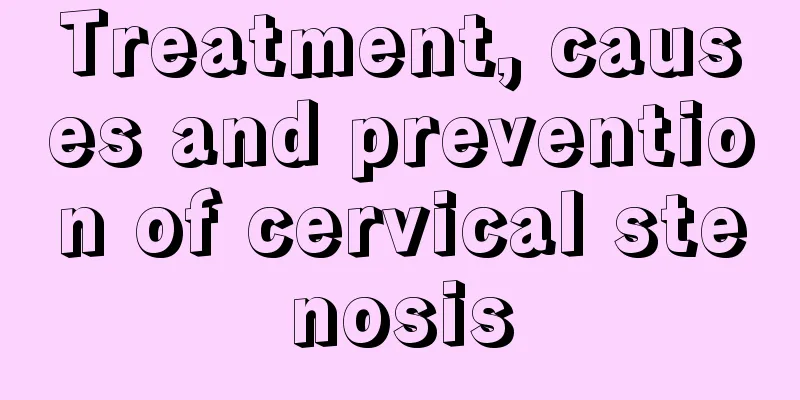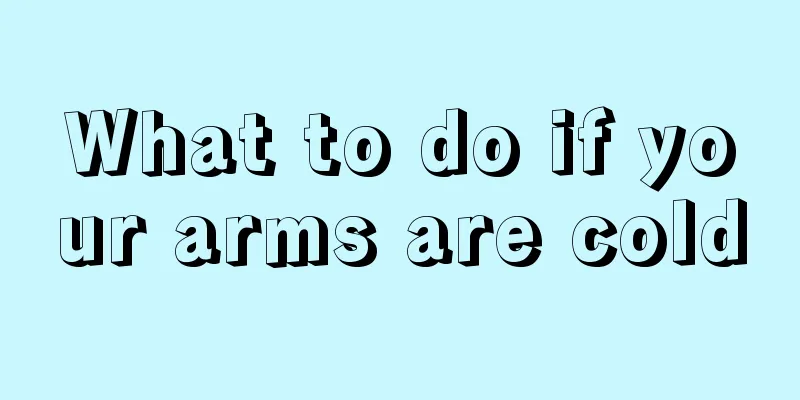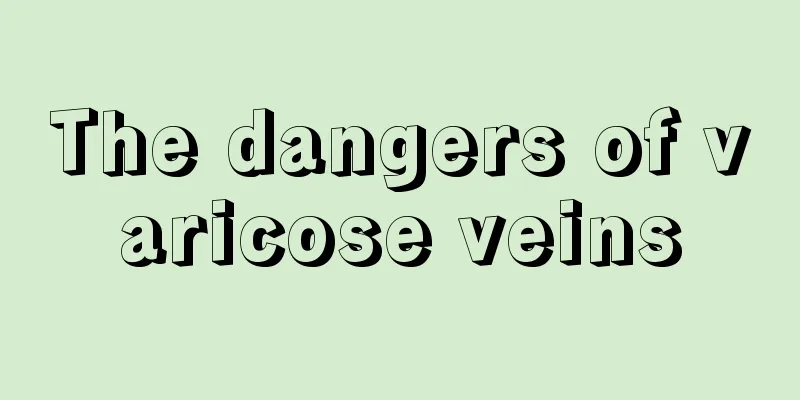Treatment, causes and prevention of cervical stenosis

|
Cervical stenosis is a very common cervical disease. Flattening of the spinal canal, chondrodysplasia, and hypertrophy of the vertebral lamina can all lead to cervical stenosis. The treatment of cervical stenosis can be roughly divided into two types: surgical treatment and non-surgical treatment. In addition, in daily life or work, you can also take certain measures to prevent cervical stenosis. Here we will introduce the causes, treatments and prevention methods of cervical stenosis. 1. Causes Since there are many factors that cause spinal stenosis, in addition to the flattening of the spinal canal itself, it is also related to factors such as thickening of the vertebral lamina, short pedicles, hypertrophy of the facet joints or growth toward the spinal canal. Of course, hypertrophy of the yellow ligament is also related to congenital development. Congenital developmental factors. The main congenital developmental factor is achondroplasia. This cause is more common in clinical practice and is the main factor causing the disease. Through the observation of thousands of surgical cases, it was found that this factor is related to family and region, and is more common in certain regions and families. Due to developmental stenosis of the spinal canal, the volume of the spinal canal is reduced, causing the local effective space to decrease, so that the spinal cord tissue in the spinal canal is in a critical saturation state. If such patients encounter certain secondary factors in the future, including traumatic edema, vertebral instability, nucleus pulposus herniation (or extrusion) and bone spur formation, they are prone to irritation of the spinal cord tissue in the spinal canal and cause neurological symptoms. The smaller the patient's sagittal diameter, the more serious the condition; the larger the pressure object, the more obvious the symptoms. On this basis, if the patient also has ossification of the posterior longitudinal ligament or other pathological anatomical factors, not only will the condition be serious, but it will also be difficult to treat and the prognosis will be poor. 2. Treatment Methods For atypical cases, non-surgical treatments should be used first, such as bed rest, traction, massage, physical therapy and drug treatment. At the same time, you should avoid catching cold and overwork to promote recovery from symptoms of nerve irritation. In typical cases that fail to respond to nonsurgical treatment, surgical treatment should be considered. The surgery mainly involves complete laminectomy and complete decompression. The so-called complete decompression means that when the vertebral lamina is removed, it must not only be high and wide enough, but also the hyperplastic bone in the posterior part of the vertebral body (anterior part of the spinal canal) and the lateral recess must be removed so as to completely relieve all compression on the cauda equina and nerve roots. For mild cases, physical therapy, immobilization and symptomatic treatment can be used. Most patients can achieve symptom relief with non-surgical treatment. For patients with rapidly progressing spinal cord damage and more severe symptoms, surgical treatment should be performed as soon as possible. Surgical methods can be divided into: anterior approach, anterolateral approach, and posterior approach according to the different approaches. The choice of surgical approach should be based on clinical experience and make full use of modern imaging technologies such as CT and MRI. Before surgery, the areas of spinal stenosis and cervical spinal cord compression should be identified, and decompression should be performed where there is compression. The principle is to perform targeted decompression of the compressed segments. For patients with compression objects in the front and back of the spinal canal, anterior approach surgery should generally be performed first, which can effectively remove the direct or major compression objects in front of the spinal cord, and perform bone grafting and fusion to stabilize the cervical spine to achieve the treatment effect. If the treatment is ineffective or the symptoms do not improve significantly, posterior decompression surgery can be performed again after 3 to 6 months. Anterior and posterior approaches each have their own indications. The two cannot replace each other and should be chosen rationally. 3. Prevention methods Method 1: For occupations that require intensive use of the waist, wear a wide protective belt. To prevent spinal stenosis, you must first develop good living habits, such as not sitting or lowering your head for too long. Start with your daily living habits and develop good posture to prevent spinal stenosis. Method 2: Do not sit, stand, or work at a desk for too long. You should avoid soft tissue fatigue caused by maintaining a posture for a long time. Before strenuous exercise, pay attention to warm-up and protection. Method three: Pay more attention to reasonable working posture and good living habits. When lifting heavy objects, bend your hips and knees and squat down, straighten your back, and only after the heavy object is pressed tightly against your body can you stand up and take a step. When carrying or carrying heavy objects, bend the chest slightly forward, bend the hips and knees slightly, take steady steps, and don't take large steps. When sleeping, the head and neck should be in a natural neutral position, with the hips and knees slightly bent, and the body should be protected from wind, cold and moisture. |
<<: Causes, inspection methods and relief methods of cervical stiffness
>>: How to deal with acne? Acne care methods
Recommend
The refrigerator fresh-keeping room is frozen
The refrigerator is a common household appliance....
Do teeth need regular cleaning?
Teeth cleaning is a very common technique in oral...
What are the symptoms of recurrence of cardia cancer after surgery? What are the prevention methods of cardia cancer?
What are the symptoms of postoperative recurrence...
Nursing methods during radiotherapy for gastric cancer
Gastric cancer patients can undergo radiotherapy ...
What are the dangers of small cell lung cancer
What are the dangers of small cell lung cancer? M...
Is Chinese medicine useful for liver cancer
Is Chinese medicine useful for liver cancer? 1. T...
How to treat pituitary tumors
For a disease like pituitary tumor, daily care is...
What are the methods for treating lung cancer? 3 effective methods for treating lung cancer
Nowadays, with the increasing number of lung canc...
Misunderstandings in the Treatment of Hamartoma
Many patients have never heard of the word hamart...
Lumbar disc herniation plate removal process
Everyone knows that bones in the human body play ...
Sudden pain in the left lower back
In people's daily lives, many people experien...
How is rotavirus enteritis treated with medication?
Rotavirus enteritis is a common acute gastrointes...
How to remove hot pot smell from clothes
When winter comes, hotpot becomes popular. But af...
What is the cure rate and survival rate of stage 4 nasopharyngeal carcinoma?
What is the cure rate for stage 4 nasopharyngeal ...
Diet care for bone cancer is also very important
After suffering from cancer, you should take good...









